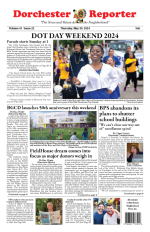July 15, 2010
Two city agencies are teaming up to get city-owned vacant property back on the tax rolls in and around Codman Square, Four Corners, and the Bowdoin-Geneva area, including a possible trolley tour of the areas for potential investors. The three are grouped under the label of “mid-Dorchester.”
The three areas have 270 vacant properties totaling 1.2 million square feet, but the agencies are initially focusing on 400,000 square feet. “We can’t do it all at once,” said Jeremy Rosenberger, a project manager who works for the Boston Redevelopment Authority. “What we wanted to do was find some critical areas where we can make an impact in disposing these properties.”
Currently, he and another project manager, Carl Hyman of the Department of Neighborhood Development, are working with a team on the areas, issuing draft development guidelines for using the properties. The agencies have had the properties environmentally screened, something developers tend to pay thousands of dollars for, and hundreds of thousands of dollars in remediation. The agency also has written up business analyses on the areas.
Some of the properties have been advertised several times in the past, and either they’ve received little to no response, or the financing fell through. The Menino administration launched the planning process, aimed at giving possible developers and others a better snapshot of the areas, in summer 2008.
A planned “aggressive” marketing plan will include a commercial brochure and possibly a trolley tour for local property owners, community residents, commercial brokers, and potential residential developers, according to Hyman.
The city has employed trolley tours in the past. “They get to see it hands on, they get to hear from one another, they get to hear from stakeholders,” Rosenberger said.
One example both Rosenberger and Hyman pointed to was 191 Bowdoin St., a 10,775-square foot vacant lot that used to be a small one-story gas station. The agencies have pegged the site as a potential “gateway” to the Bowdoin-Geneva neighborhood.
“Whether it’s bringing a bank, any retail establishment that’s not there, it has a potential to fill that void and enhance the district and provide a place for people to shop locally,” Rosenberger said.
A market assessment of the Bowdoin-Geneva area said the “existing supply of business is not meeting market demand” for the 14,000 residents in the area. The median household income is $46,701, according to the agencies.
The make-up of the neighborhood is 58 percent African-American, 9 percent white, 5 percent Asian, and 29 percent “other.” Fifty-five percent of households have children, and one-third do not own a vehicle. They spend $63 million a year at retail stores and restaurants.
Because of its potential to be a “gateway,” the draft development guidelines say “the community looks toward redevelopment of this former gas station and repair shop as an opportunity to provide more commercial and/or institutional uses that would complement and further advance the business district. A mixed use project that would provide high quality housing and ground floor commercial or retail space would also be entertained.”
Potential uses range from a bank, a small grocery store, a high-quality restaurant, a fitness center, a community function hall, or residential and senior housing.
The agencies hope to issue requests for proposals on the various properties soon.
The two agencies hosted a pair of back to back meetings in late June on a draft action plan for the three communities. About 50 to 60 individuals attended each of the meetings, city officials said.



